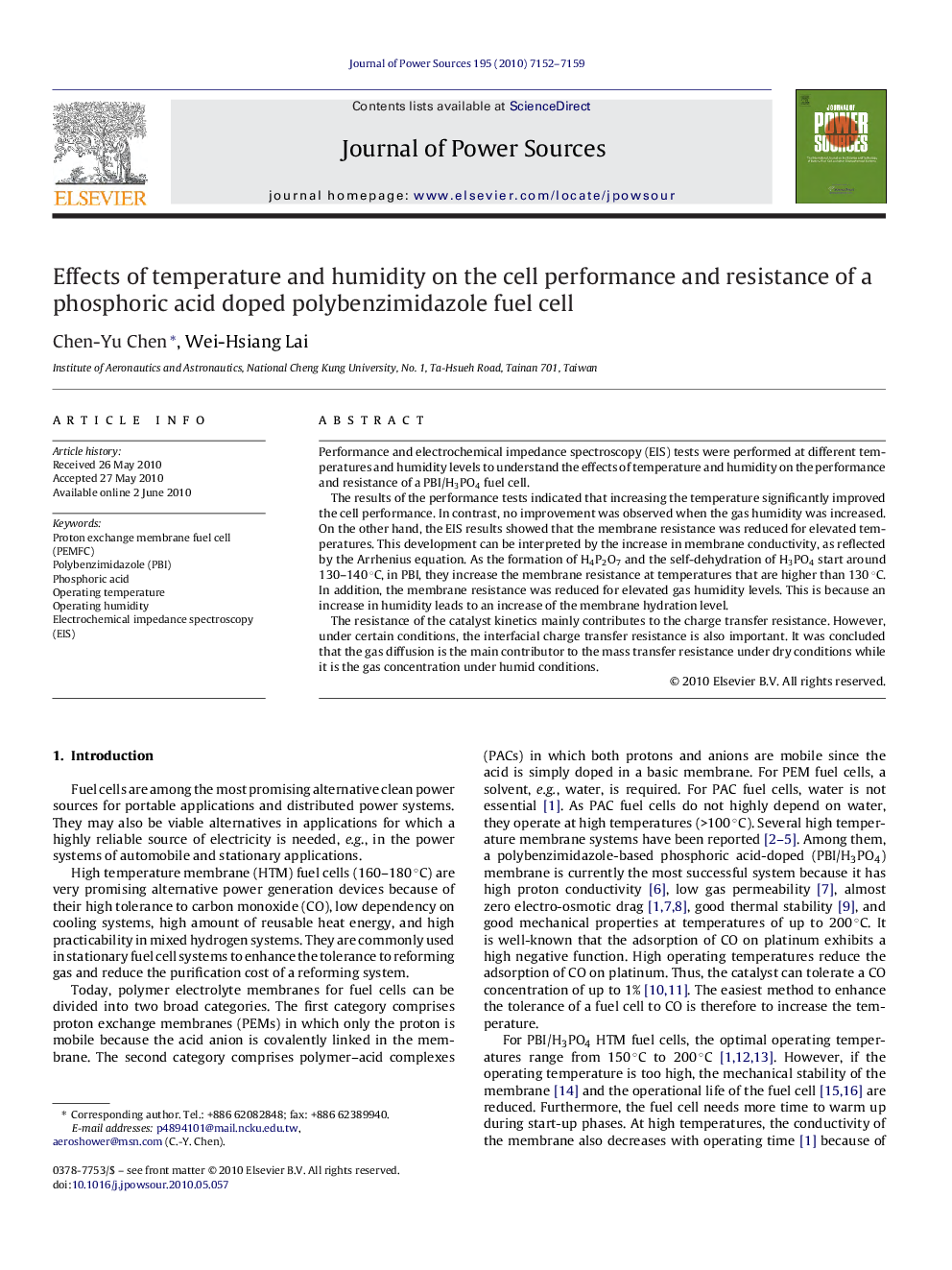| Article ID | Journal | Published Year | Pages | File Type |
|---|---|---|---|---|
| 1284855 | Journal of Power Sources | 2010 | 8 Pages |
Performance and electrochemical impedance spectroscopy (EIS) tests were performed at different temperatures and humidity levels to understand the effects of temperature and humidity on the performance and resistance of a PBI/H3PO4 fuel cell.The results of the performance tests indicated that increasing the temperature significantly improved the cell performance. In contrast, no improvement was observed when the gas humidity was increased. On the other hand, the EIS results showed that the membrane resistance was reduced for elevated temperatures. This development can be interpreted by the increase in membrane conductivity, as reflected by the Arrhenius equation. As the formation of H4P2O7 and the self-dehydration of H3PO4 start around 130–140 °C, in PBI, they increase the membrane resistance at temperatures that are higher than 130 °C. In addition, the membrane resistance was reduced for elevated gas humidity levels. This is because an increase in humidity leads to an increase of the membrane hydration level.The resistance of the catalyst kinetics mainly contributes to the charge transfer resistance. However, under certain conditions, the interfacial charge transfer resistance is also important. It was concluded that the gas diffusion is the main contributor to the mass transfer resistance under dry conditions while it is the gas concentration under humid conditions.
